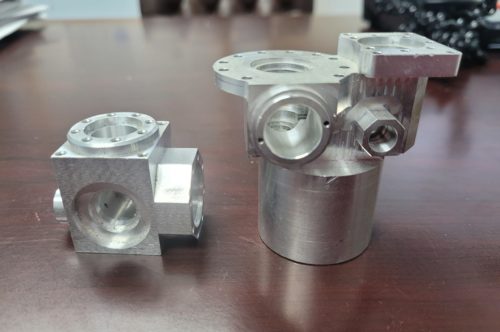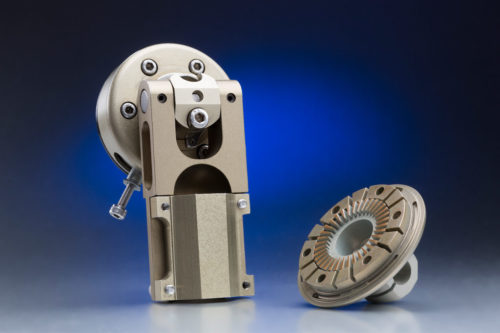6 Keys to Successful Prototyping for Precision Machining
Leave a CommentAre you considering working with a precision machine shop to develop a prototype?
Prototyping is, by nature, an iterative process, and getting a new part or product right takes time. Before requesting a quote for your prototype, it’s important to know what to expect so that you have the best experience possible.
What Precision Machining Customers Need to Know About Prototyping
Whether you’re a startup prototyping for the first time or a large company working on the next in a long line of prototype components, these tips can help you get the most out of the process:
1. Submit a PDF and a solid 3D model
Whenever possible, submit a PDF and a solid 3D model, so your precision machining partner has all the information they need to start building your prototype immediately.
 A good 3D model speeds up the programming process, especially for complex milled parts. Using the 3D model, we can export part data to our system and start running tool paths. If you don’t provide a 3D model, your manufacturing partner will need to create one. At Peerless Precision, we create models for our customers, but it does add to the total project lead time.
A good 3D model speeds up the programming process, especially for complex milled parts. Using the 3D model, we can export part data to our system and start running tool paths. If you don’t provide a 3D model, your manufacturing partner will need to create one. At Peerless Precision, we create models for our customers, but it does add to the total project lead time.
You’ll also need a 2D PDF drawing before your precision machine shop can begin prototyping. The PDF provides all the critical specifications for the prototype, including tolerances; materials; MIL-SPEC, AMS, or PSM spec requirements; and finishing processes.
2. Provide clear specifications and instructions
Use precise language in your PDF to minimize the risk of confusion or misinterpretation. For instance, referring to a material like titanium or aluminum too generally isn’t very helpful because there are dozens of grades and alloys, and they all have different properties. If you work with us and don’t have a material preference, state that in writing on your drawing. We’ll let you know what we select on your behalf.
There may be times when you don’t know the exact specs for what you need. In those cases, your manufacturer can probably point you to
subcontractors and share resources to help you make an informed decision. Just know that adding this step once you’ve initiated the prototyping process introduces a roadblock that can delay your project.
3. Anticipate changes
After the first prototype iteration is complete, expect a series of back-and-forth communications with your precision machine shop. At Peerless Precision, we send a customer their prototype so they can test it and adjust the design if necessary. Then, they send us the updated design so we can start working on the next iteration. It’s not uncommon to repeat this process several times.
We encourage customers to be highly responsive if they want their next iteration done quickly—standard lead times typically begin once a shop has your updated design in hand. The faster you test the prototype, adjust the design, and resubmit it, the faster the manufacturer can get to work.
4. Determine the quality you need at every phase
Choose a precision machine shop that delivers the quality you need at a cost you can manage. If you’re using your prototype to test for fit rather than function, you might not need an expensive prototype made to spec.
But if you’re looking for a high-quality prototype for testing fit, form, and function, you’ll want a precision machine shop that’s up to the task. Quality does come at a higher price, especially when dealing with low volumes, but chances are the cost per part will substantially decrease if you plan to enter production.

5. Think ahead to production
Do you know that you’ll be taking your prototype to production ahead of time? Many customers in this situation work with two different shops—one for prototyping and another for production. The drawback is that the production shop won’t know the ins and outs of your part, which can add time and cost to your project once it’s out of prototyping.
A better option is to select a precision machine shop that will grow with you from prototyping through production. They’ll already have all the operations and programs in place, which can save you time and money when your part is ready for production.
6. Reach out for help
If you outsource prototyping internationally, you may pay less for it, but you’ll likely have fewer opportunities to ask questions and may not receive prompt feedback—and in the prototyping world, those are significant losses.
When you work with the team at Peerless Precision, we’re a quick phone call away at all times, so you can easily reach out with any questions or concerns you have during prototyping. We’ll be in close touch with you, too, especially if we find ways to optimize manufacturability.
Looking for a precision machining partner who can work with you from prototype through production? Peerless Precision is here to fill that role and ensure a successful manufacturing process. Request a quote today to get started!




